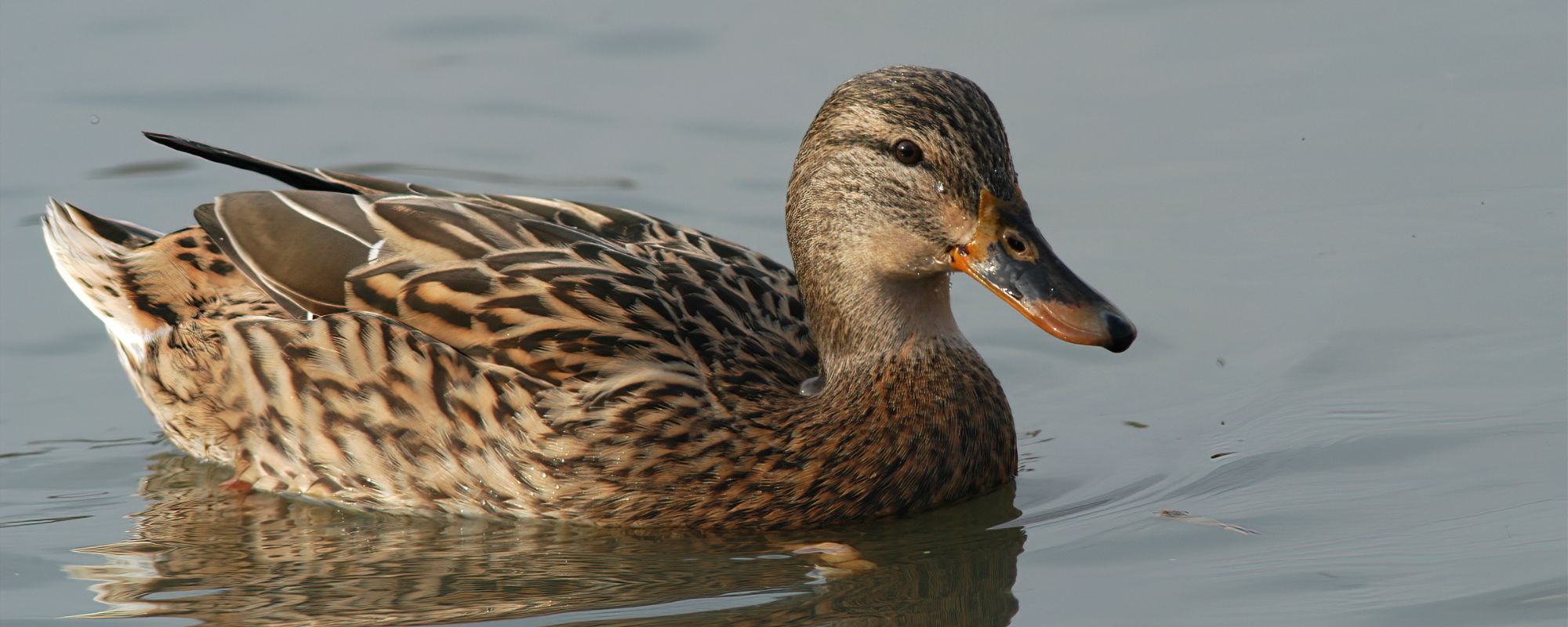
The mallard is a rapist and an extremely unfaithful lover.
Even so, its beauty and its important help with mosquito control is indisputable.
Name
- Scientific name: Anas platyrhynchos
- Spanish: Ánade real / Pato azulón
- Catalan: Ànec collverd
- Euskera: Basahate
- Galician: Lavanco
Classification
- Class: Birds
- Order: Anseriforms
- Family: Ducks
- Species: Mallard
Degree of protection of the mallard
Worldwide
The mallard is an abundant animal that is not protected.

In Spain
The mallard is not protected and is a huntable species. This means that it can be hunted.
In Catalonia
Same as in Spain.
Mallard distribution map

Distribution:
The mallard is widely distributed in the northern hemisphere, where it breeds. In the southern hemisphere it overwinters. The population in Spain does not migrate, it is sedentary.
In Australia and New Zealand the mallard was introduced in the 19th century. Since it mates with native ducks, it is considered a problematic animal on that continent.
Mallard habitat

The mallard is very adaptable and can be found almost anywhere there is water. They swim in lakes, ponds, rivers, meadow ditches and the sea. But always with the coast in sight.
They often live in parks, rivers passing through villages and even in decorative fountains. It is not exceptional for them to choose a balcony or a terrace to nest.
Nutrition
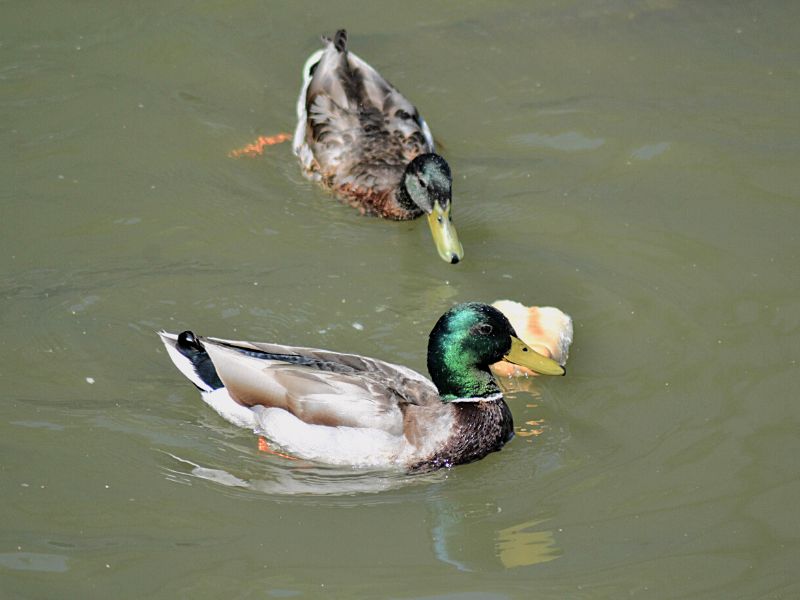
The mallard is omnivorous
Vegetable foods
- Aquatic plants
- Grass
- Seeds
- Fruits
Animals
- Mollusks
- Insect larvae
- Small crabs
- Tadpoles and frogs
- Small fishes
- Snails
How does the roe deer eat?
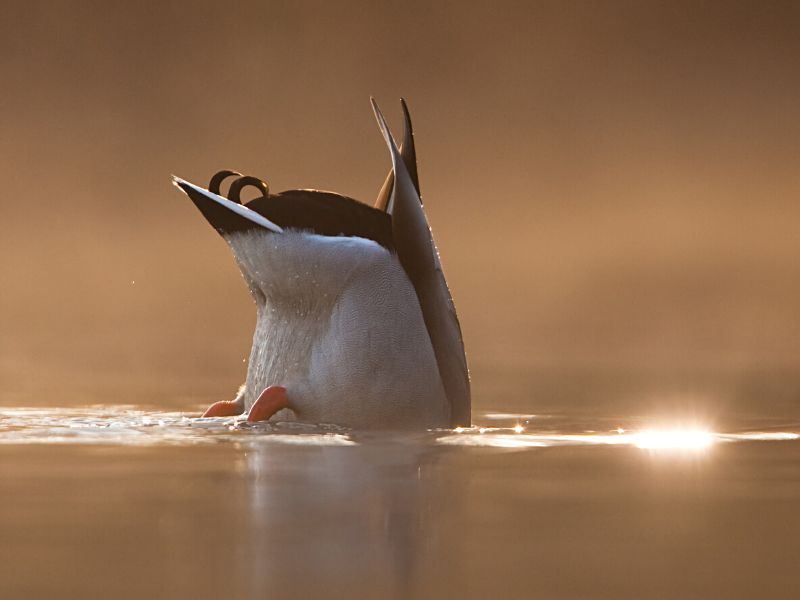
Ruminant
When searching for food below the surface of the water, mallards submerge their heads. They bite parts of plants with their beaks and expel water through the horny ridges of their beaks. These parts of the beak act as a sieve in which food is trapped.
They also come out on the ground and eat grass and tender shoots of other plants.
Reproduction of the mallard

Formation of the couple
The mallard forms a pair for a season. Ducks that do not migrate form pairs as early as autumn. Migratory ducks in spring.
Nest
Couples search for a nest place. They prefer hidden places in the vegetation, sometimes up to two or three kilometers away from the water.
Eggs
In March, females lay 7 to 16 eggs. They incubate them alone for 25 – 28 days. During this time they are easy prey for predators.
Mallard hatchlings

All chicks hatch at the same time. They need about 12 hours to recover from the immense effort involved in hatching.
They are very well developed and can swim from the beginning. In the first hours of their lives they run after who they see first. Usually behind their mother. From her they learn everything they will need to survive.
After eight weeks, the ducklings are able to fly. The mother remains with the chicks for another 1 – 2 weeks.
How many years can a mallard live?

In the wild they usually live 10 – 15 years. In captivity, up to 40 years of age.
Predators
- Foxes
- Raccoons
- Birds of prey
- Martens and other mustelids
- Rats
- Otters
- Pond slider (invasive species)
The mallard is a huntable species, so humans are also among its predators.
Mallard, fascinating facts

Migration
- During migration it flies at altitudes of up to 6,400 meters. This makes it the 7th highest flying animal in the world.
- In one day it can fly over 1,200 km.
- It can fly at 125 km/h taking advantage of thermal currents.
Coloration of the males
Males change their feathers 4 times a year. For the autumn and spring mating season they are brightly colored. In summer and winter their coloration resembles that of the females.
Sex life of the mallard
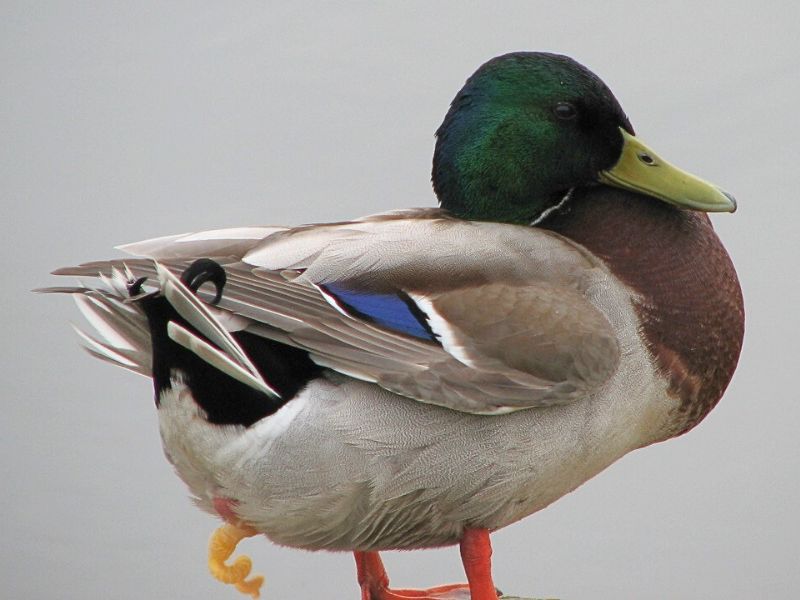
Rape of females
Due to the high mortality of females during egg incubation, there are many more males. During mating the males chase the females with such ferocity that they sometimes drown them.
Infidelity
It often happens that a male fertilizes a female that is not his mate. They even mate with females of other duck species.
Penis
Birds usually have only a cloaca, but male mallards have a penis. Due to their promiscuous lifestyle, they often catch infections.
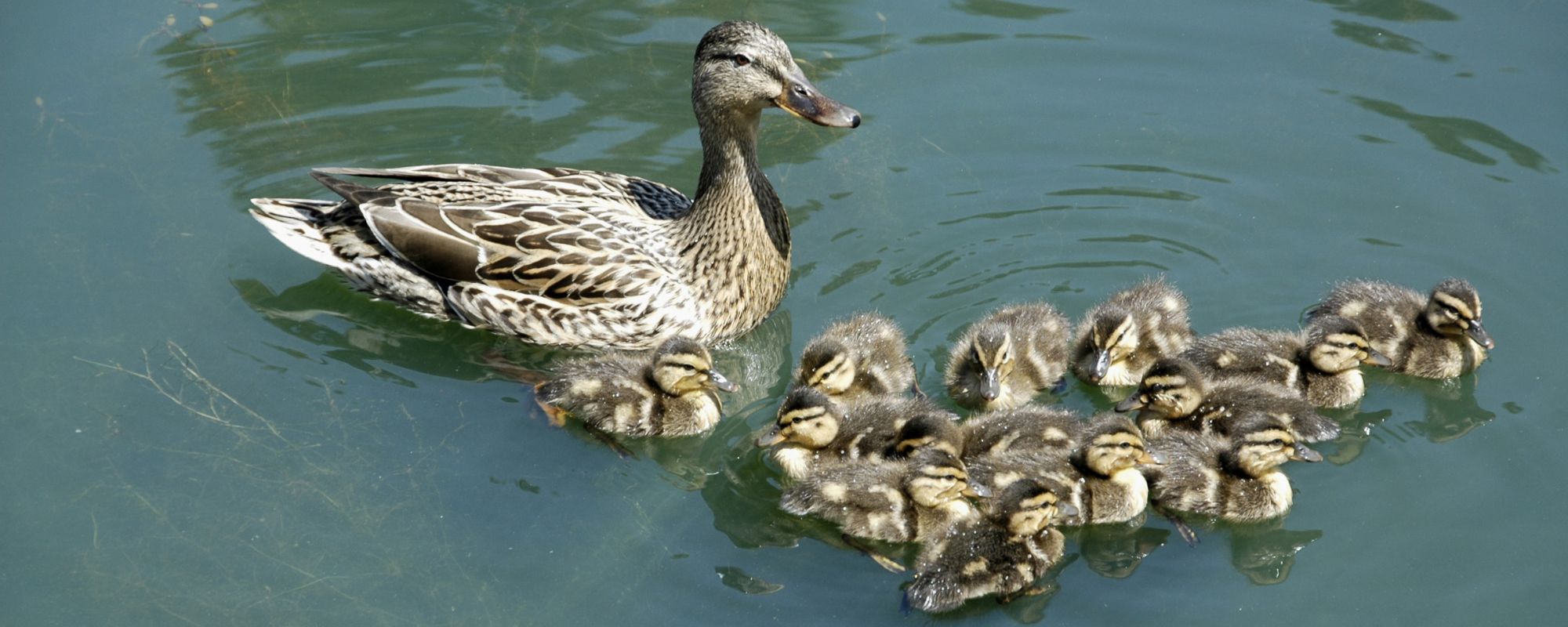
Although the behavior of male mallards is not in accordance with human values, let us respect this precious bird.
It will thank us with its beauty and its important role in controlling the mosquito population, since it feeds on their larvae.